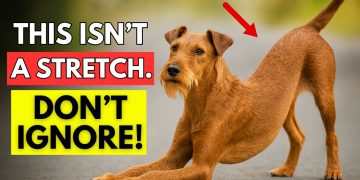How to Introduce a New Puppy to an Older Dog: A Step-by-Step Guide for Success. Bringing a new puppy home is one of the most exciting moments as a dog parent. But if you already have an older dog, you might be a little nervous about how the two will get along. Will they be best friends or bitter rivals? Introducing a new puppy to an older dog can be a delicate process, but with some planning, patience, and positive reinforcement, you can help them form a bond that will last for years.
In this post, I’ll walk you through the best ways to introduce your new puppy to your older dog, sharing tips on how to make the first meeting a success and how to foster a positive relationship between the two.
Understanding the Dynamics Between an Older Dog and a New Puppy
Let’s start with a bit of dog psychology. Older dogs are usually set in their ways, with established routines and comfort zones. A new puppy? Well, they’re like little balls of chaos – full of energy and curiosity. It’s no wonder the older dog might feel a little threatened or annoyed by this new whirlwind in their home.
The key here is understanding that each dog is different. Some older dogs might welcome a new puppy with open paws, while others may need more time to adjust. Keep in mind that an older dog may have less energy or patience for rough play, so it’s important to manage expectations and give your older dog the space they need to feel comfortable.

Prepare Your Home and Your Older Dog for a New Puppy
Before your puppy even steps paw in your home, preparation is crucial. Think of it like getting ready for a guest who will stay forever – you want everything to be set up right from the start.
First, create separate spaces for your new puppy and your older dog. This allows both dogs to feel secure and have their own areas to retreat to. You can use baby gates to create zones or give each dog their own room or crate.
Next, introduce their scents before they meet face-to-face. Swap blankets or toys between the two so they can start getting familiar with each other’s scent. Dogs rely heavily on smell, so this helps reduce the shock of meeting a completely unfamiliar animal.
Lastly, stick to your older dog’s routine. This is super important! Your older dog needs to feel like their world isn’t being turned upside down by the new arrival. Keep feeding times, walks, and playtime consistent to avoid any feelings of jealousy.
How to Make the First Meeting Between Your Dogs a Success
Now comes the big moment – the first meeting! This is where things can go really right or really wrong, but don’t worry, we’ve got a plan.
- Choose a neutral territory: Introduce your dogs in a neutral space, like a park or a friend’s yard, where your older dog doesn’t feel the need to defend their territory. This helps avoid territorial behavior and makes the initial interaction less intense.
- Keep it calm and controlled: Both dogs should be on leashes during the first meeting. Let them approach each other calmly and at their own pace. A little sniffing is normal and a good sign that they’re curious. If one dog gets overwhelmed, take a step back and give them some space.
- Observe body language: Watch both dogs closely for signs of how they’re feeling. A wagging tail, relaxed posture, and sniffing are all positive signs. Growling, stiff posture, or baring teeth? That’s a sign it might be time for a break.

Ensuring a Positive Long-Term Relationship Between Your Puppy and Older Dog
Once the initial introductions are over, the real work begins – integrating the two dogs into one happy household. This is going to take time, so don’t rush it!
- Supervise their interactions: During the first few weeks, closely supervise all interactions between the puppy and the older dog. Keep their playtime short and positive, ending each session on a good note.
- Monitor resource guarding: Some older dogs may become possessive over food, toys, or their favorite resting spots. Be mindful of this and feed them in separate areas. If your older dog seems protective of their belongings, try giving both dogs separate toys to prevent competition.
- Reward good behavior: Positive reinforcement is your best friend here! Praise and reward both dogs when they interact calmly or play nicely. Treats, praise, and affection go a long way in reinforcing good behavior.
Signs of Trouble and When to Seek Help
Let’s be real – not all dog introductions go smoothly. While a little growling or stiffness is normal, especially at first, if you notice persistent signs of aggression or stress, it might be time to seek professional help.
If your older dog shows signs of aggression (snarling, lunging, or biting) or seems overly stressed, don’t hesitate to consult with a professional dog trainer or behaviorist. They can provide personalized advice to ensure the safety and comfort of both dogs.
Remember, it’s better to address any issues early on rather than letting bad behavior fester.
Final Thoughts: Patience, Time, and Love Are Key
Introducing a new puppy to an older dog takes patience, consistency, and plenty of love. With the right approach, your dogs can develop a bond that will fill your home with even more joy and companionship. Don’t rush the process, give each dog their space when needed, and always celebrate the small victories along the way.









Discussion about this post